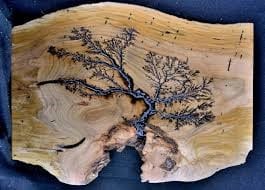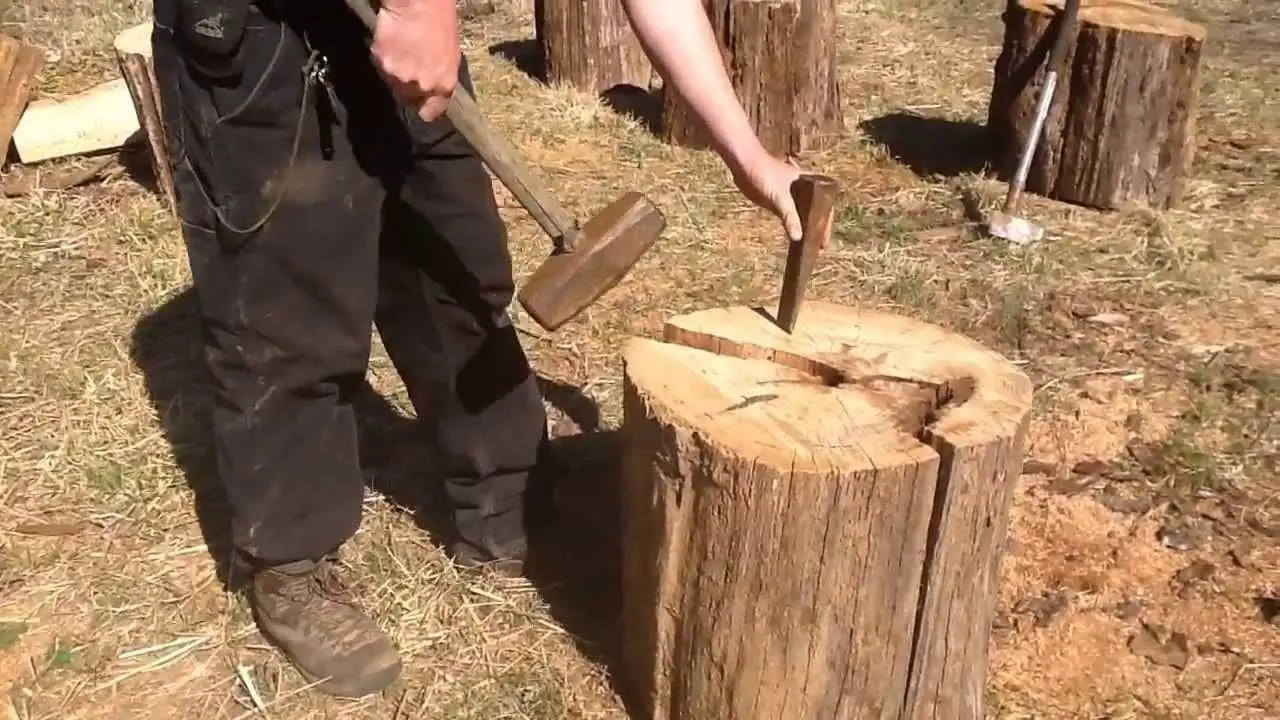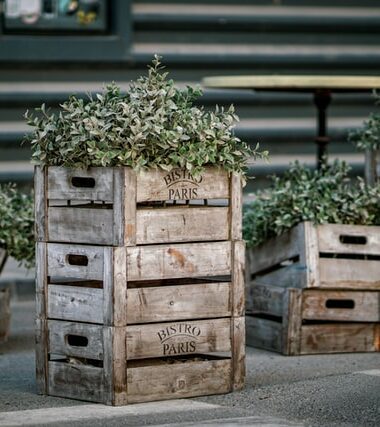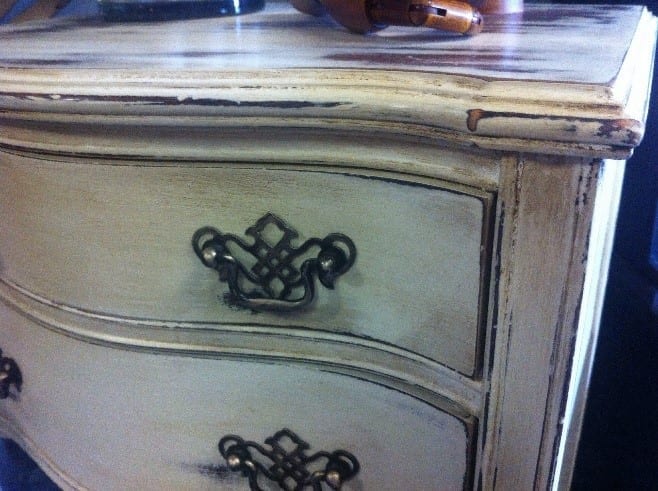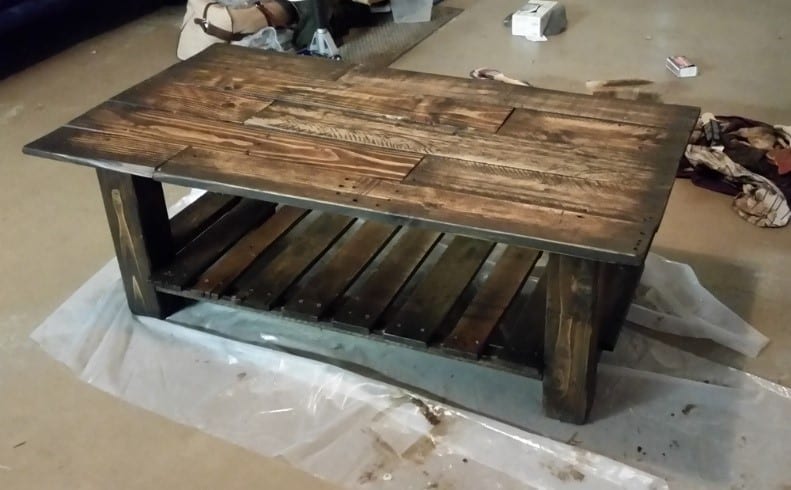In order for you to be able to get a blemish free finish with an oil-based polyurethane is just within your reach by just following a few steps. The advantage of an oil-based polyurethane varnish is that it will help you bring out the natural beauty of your wood or wood grain.
You will also be needing a few materials in order to do this one and a bit of patience to achieve great looking results. If you want to know how it is done then read on this article.
What you need to have:
- Mineral spirits
- Oil based polyurethane varnish
- Natural bristle brush
- 400 grit sandpaper
- Automotive rubbing compound
Instructions:
1) Seal the surface
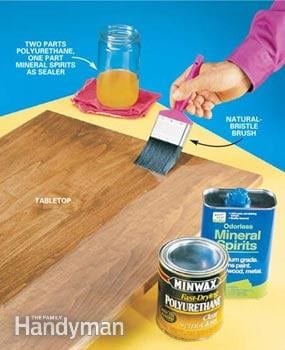
Image Source: https://www.familyhandyman.com/heating-cooling/furnace-repair/how-to-apply-polyurethane/view-all/
The first thing that you need to do is to make sure that you will thin out your polyurethane with mineral spirits. Once you are done, brush the sealer on using a natural bristles brush using a long and even strokes. See to it that you will be catching any runs. Load the brush by dipping it about 1-inch into the mixture.
Always keep a wet edge by overlapping each pass until the surface is completely coated. You can catch the drops by using your brush and slowly smooth them into the surface. Wait for another five minutes and see if there are any dripping.
2) Apply two undiluted coats of polyurethane
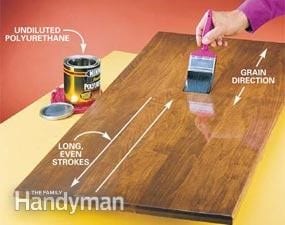
Image Credit: https://www.familyhandyman.com/heating-cooling/furnace-repair/how-to-apply-polyurethane/view-all/
Once you are in for your second or third coats then you need to use an undiluted polyurethane varnish. Always follow the direction of the grain. Remember not to wipe your brush on the rim of the can as this may introduce air bubbles. In order to avoid getting any runs to avoid using too much.
Use just enough coats to get a nice even coat without any dry spots. Once you have covered the surface, brush it over again with the grain from end to end. For you to get a uniform coating, overlap the strokes that you will be doing. It is also the time to catch any drips especially along the edge of your board.
3) Fix the imperfections
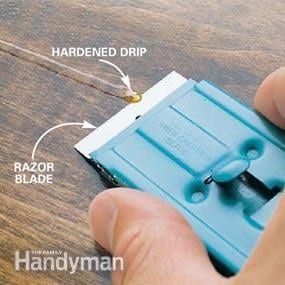
Image Credit: https://www.familyhandyman.com/heating-cooling/furnace-repair/how-to-apply-polyurethane/view-all/
It is common to see a run or two and even some dust socks that have settled on the surface. You will see this one, especially after your first coat. Once you will have a fully dry surface, cut the drips using a razor blade. You need to be careful though so that you will not scratch the surface. If you do this then you will need to slowly work on it just like what a surgeon will be doing.
If you have left the surface to dry for 24 hours then any imperfections that you will see can be addressed by wet sanding it with a 400 grit sandpaper that has been mounted to a sanding block.
Dip the sandpaper in water to start wet sanding it. Do it in a circular motion and this will remove the blemish and dust. You need to use enough water to make sure that you will not be burning through the delicate finish. Sand it just enough to remove any blemish.
4) Apply the final coat
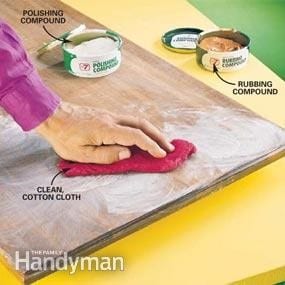
Image Credit: https://www.familyhandyman.com/heating-cooling/furnace-repair/how-to-apply-polyurethane/view-all/
After 4 hours has passed then you now need to brush on the final coat. Always use the same care once you will be applying coats. If you have any bubbles or runs or even dust then you might need to do some further repairs. When applying for the final coat, see to it that you will use the same method used in the second and third coat.
You need to polish the surface though if you have done any wet sanding on the surface. If you will apply a polish then wait for a couple of days for the polyurethane to fully cure. Damp a clean cotton cloth with water and apply an automotive rubbing compound on the surface using a circular motion.
The compound will have an abrasive effect and will remove any scratches that have been left by the 400 grit sandpaper. Let the surface dry once you are done rubbing.
Buff it off using a dry and clean cloth. You can opt it apply more polishing compound once you find that the surface is still a bit cloudy. Let it dry and buff again. You will have a professional looking shine once you are able to do this one.
Conclusion
Finishing wood with polyurethane is one great way in achieving a great shine on any wood surface. Applying these steps will ensure that you will have that shiny wood that everyone will envy.

